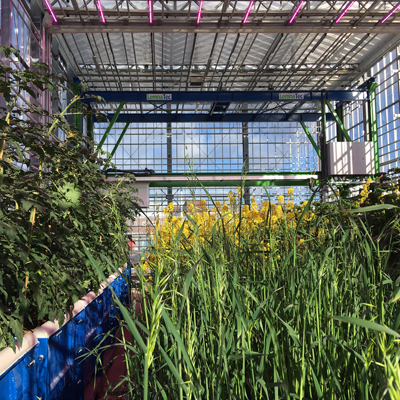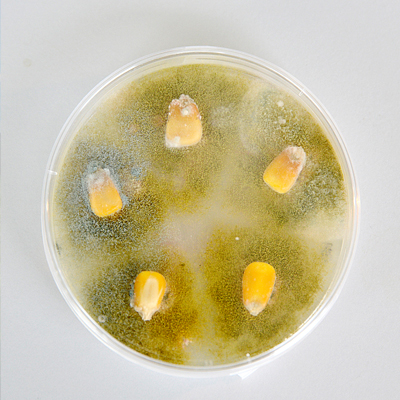- DatesNovember 2016 – June 2021
- SponsorBiotechnology and Biological Sciences Research Council (BBSRC) and Science Foundation Ireland.
- Funded£400,000 to Cranfield; £800,000 total project.
- PartnersUniversity College Dublin (School of Biology and Environmental Science), Ireland.
Oats and oat-based product consumption in the UK and Ireland are increasing as they have beneficial health benefits. Oats can be infected during the critical ripening phase with a pathogen called Fusarium langsethiae, which produces no visible symptoms but contaminates the grain with type A trichothecenes named T-2 and HT-2.
Although there are European Union and UK recommendation on indicative levels of T-2 and HT-2 in oats for human consumption / feed (2013/165/EU), there is no information on how climate change could influence the infection of oats by this pathogen and impacts on mycotoxin contamination.
In close collaboration with University College Dublin, Ireland, via a BBSRC / Science Foundation Ireland initiative, we will examine the potential for identifying cultivars in the UK and Ireland that have better resistance to the pathogen. Also, we will develop effective strategies for controlling contamination by better understanding the effect of present / future climate change scenarios on the pathogen and mycotoxin contamination.
Recent publications
Verheecke-Vaessen C, Garcia-Cela E, Lopez-Prieto A, Jonsdottir IO, Medina A & Magan N (2021) Water and temperature relations of Fusarium langsethiae strains and modelling of growth and T-2 and HT-2 mycotoxin production on oat-based matrices, International Journal of Food Microbiology, 348 (June) Article No. 109203. Dataset/s: >10.17862/cranfield.rd.14473143
Verheecke-Vaessen C, Garcia-Cela E, Lopez-Prieto A, Jonsdottir IO, Medina A & Magan N (2021) Water and temperature relations of Fusarium langsethiae strains and modelling of growth and T-2 and HT-2 mycotoxin production on oat-based matrices, International Journal of Food Microbiology, 348 (June) Article No. 109203. Dataset/s: 10.17862/cranfield.rd.14473143
Verheecke-Vaessen C, Diez-Gutierrez L, Renaud J, Sumarah M, Medina A & Magan N (2019) Interacting climate change environmental factors effects on Fusarium langsethiae growth, expression of Tri genes and T-2/HT-2 mycotoxin production on oat-based media and in stored oats, Fungal Biology, 123 (8) 618-624. Dataset/s: 10.17862/cranfield.rd.8298053










